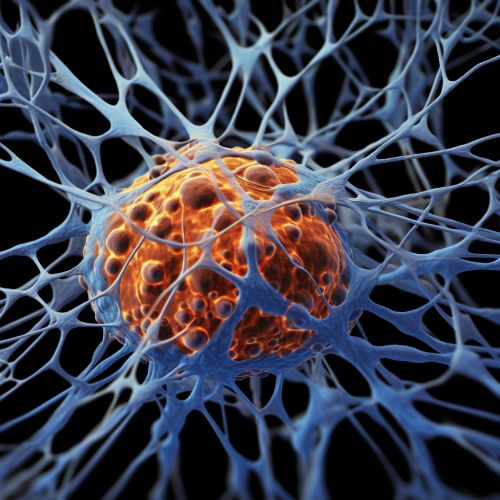Leber's hereditary optic neuropathy
Introduction
Leber's hereditary optic neuropathy (LHON) is a mitochondrial genetic disorder primarily affecting the optic nerves. This condition is characterized by vision loss, predominantly in young adult males. The disease is named after the German ophthalmologist, Theodor Leber, who first described it in the 19th century.
Genetics
LHON is a maternally inherited genetic disorder, which means it is passed down from the mother's side. The disease is caused by point mutations in the mitochondrial DNA (mtDNA), specifically in the genes that encode for the complex I subunits of the mitochondrial respiratory chain. There are three primary mutations that account for over 90% of LHON cases: m.3460G>A, m.11778G>A, and m.14484T>C. These mutations affect the genes MT-ND1, MT-ND4, and MT-ND6 respectively.


Pathophysiology
The pathophysiology of LHON is not fully understood. However, it is believed that the primary mutations in the mtDNA lead to a defect in complex I of the mitochondrial respiratory chain. This defect causes a decrease in ATP production and an increase in reactive oxygen species (ROS). The increase in ROS can lead to oxidative stress, which damages the optic nerve cells, leading to vision loss.
Clinical Features
The most common clinical feature of LHON is painless, subacute, bilateral vision loss. The vision loss typically starts in one eye and then affects the other eye within weeks or months. The vision loss is usually severe, with visual acuity dropping to 20/200 or worse. Other clinical features may include dyschromatopsia (impaired color vision), central or cecocentral scotoma (an area of decreased vision in the visual field), and optic disc pallor or swelling.
Diagnosis
The diagnosis of LHON is based on clinical features, family history, and genetic testing. The genetic testing can confirm the presence of one of the three primary mtDNA mutations. Other tests that can aid in the diagnosis include optical coherence tomography (OCT), visual field testing, and visual evoked potentials (VEP).
Treatment and Management
There is currently no cure for LHON. However, some treatments may help to improve vision or slow the progression of the disease. These treatments include idebenone, a synthetic analog of coenzyme Q10 that can bypass the complex I defect and improve ATP production. Other potential treatments include gene therapy, stem cell therapy, and antioxidants. In addition, patients with LHON are advised to avoid environmental factors that could potentially trigger the onset of symptoms, such as smoking and excessive alcohol consumption.
Prognosis
The prognosis for LHON varies. Some patients may experience spontaneous visual improvement, usually within the first year of onset. However, the majority of patients remain legally blind. The disease does not typically affect lifespan.
Epidemiology
LHON affects approximately 1 in 30,000 to 50,000 people worldwide. The disease affects males more frequently than females, with a male to female ratio of approximately 4:1. The onset of symptoms usually occurs in young adulthood, typically between the ages of 15 and 35.
Research Directions
Current research on LHON is focused on understanding the pathophysiology of the disease and developing effective treatments. This includes research into gene therapy, stem cell therapy, and the role of antioxidants in the treatment of LHON.
